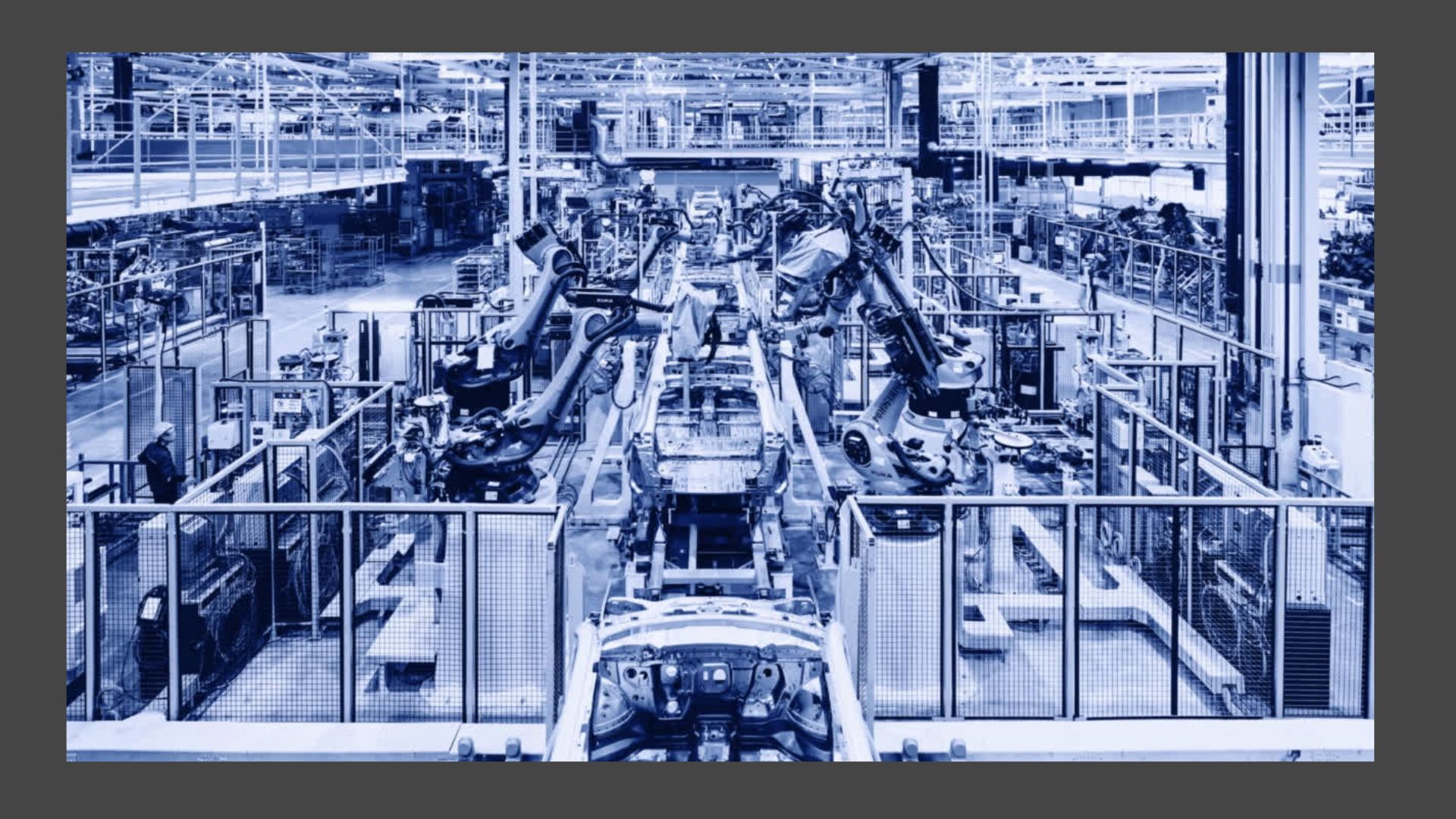- Reliability Edge Weekly Newsletter by Hamiltonian Systems
- Posts
- Reliability Edge Weekly Reliability Pulse
Reliability Edge Weekly Reliability Pulse
The newsletter for reliability and maintenance engineers and IT leaders, to improve the quality of their asset and MRO data to achieve excellence in manufacturing, published by Hamiltonian Systems. Unified data management & more...


"The message of Kaizen is that not a day should go by without some kind of improvement being made somewhere in the company." — Masaaki Imai
Streamlined Data Processes for Enhanced Efficiency
Why Automated Data Workflows Matter
In modern reliability engineering, delays in maintenance planning often come down to slow, error-prone data handling. Automated data workflows solve this by capturing, processing, and delivering asset insights accurately and quickly, freeing teams from time-consuming manual entry. The result is faster decisions, reduced downtime, and optimized resource allocation.
From Data Chaos to Clarity
Manual data entry and spreadsheet juggling introduce risks:
Human error that skews asset condition reports.
Delayed updates leading to reactive instead of proactive maintenance.
Inconsistent data formats that slow analysis.
Automated workflows standardize collection, formatting, and reporting—turning scattered data into actionable insights.
Core Benefits of Automated Data Workflows
1. Improved Accuracy
Automated systems eliminate transcription errors and maintain consistent data formats, ensuring reliability metrics and KPIs are trustworthy.
2. Faster Turnaround
With real-time or scheduled daily updates, planners can prioritize critical work orders without waiting for manual reports.
3. Optimized Resource Use
Maintenance teams spend less time chasing information and more time on high-impact repairs, increasing wrench time and overall productivity.
How It Supports Maintenance Planning
Automated workflows feed Computerized Maintenance Management Systems (CMMS) with timely, accurate information such as:
Asset health status.
Predicted failure timelines.
Inventory levels for required spare parts.
This integrated data loop supports predictive maintenance strategies, reducing unplanned downtime and extending equipment life.
Steps to Implement Automated Data Workflows
Map Current Processes – Identify manual bottlenecks and repetitive tasks.
Integrate Systems – Ensure sensors, CMMS, and ERP platforms share data seamlessly.
Establish Daily Reporting – Enable planners to work from the latest performance metrics.
Monitor & Refine – Continuously improve workflow rules to adapt to operational needs.
The Competitive Advantage
Reliability teams leveraging streamlined, automated workflows move beyond reactive firefighting. They gain data-driven foresight that strengthens asset performance, reduces cost per maintenance task, and ensures operational continuity.
Automated Parts Management for Operational Savings
Why Smart Inventory Systems Matter
In reliability engineering, maintenance delays often occur because the right part isn’t available at the right time. Smart, automated inventory systems solve this by tracking stock levels in real time, predicting demand, and automatically reordering components. The result: reduced waste, controlled costs, and uninterrupted maintenance schedules.
The Problem with Manual Inventory Management
Most CMMS and ERP systems are traditionally meant to control inventory in a more static way than the modern systems, and can cause:
Overstocking, tying up capital in rarely used parts.
Stockouts that delay critical repairs.
Misplaced or untracked items that create inefficiencies.
These issues lead to unnecessary downtime, higher carrying costs, and frustrated maintenance teams.
Core Benefits of Automated Parts Management
1. Reduced Waste
Automated systems optimize stock levels based on usage patterns, minimizing obsolete or expired components.
2. Lower Operational Costs
Just-in-time inventory models reduce storage costs while ensuring essential spares remain available.
3. Increased Maintenance Efficiency
Planners spend less time chasing parts, and technicians start repairs faster, improving wrench time and throughput.
How It Improves Maintenance Planning
Integrated with Computerized Maintenance Management Systems (CMMS), automated parts management can:
Predict when a part is needed and update the demand accordingly.
Sync with maintenance schedules to ensure parts are ready before work orders start.
Track supplier performance for improved sourcing decisions.
This alignment between asset health data and inventory readiness ensures seamless maintenance execution.
Steps to Implement Automated Parts Management
Audit Current Safety Stock Levels – They should be adjusted based on usage, criticality, failure, safety, and quality consequences.
Implement a Predictive Solution – By predicting the time and type of failure that will occur, parts demand is calculated, but parts are not ordered unless the failure falls within a supply chain planning lead time.
Integrate Systems – Connect CMMS, ERP, and supplier databases for real-time data flow.
Monitor KPIs – Track cycle counting accuracy, parts availability, order accuracy, and cost savings over time.
The Competitive Advantage
Companies using automated inventory systems don’t just save money—they gain resilience. When every critical component is available exactly when needed, equipment uptime improves, maintenance delays vanish, and operational efficiency soars.
Smart Scheduling for Maintenance Optimization
The Power of Intelligent Scheduling
In high-uptime industries, poorly timed maintenance can cause unnecessary downtime, production delays, and higher operational costs. Smart scheduling tools use predictive analytics and asset health data to create optimized maintenance schedules that minimize disruptions and maximize productivity.
The Limitations of Traditional Scheduling
Conventional maintenance planning often relies on static calendars or reactive scheduling, leading to:
Unnecessary maintenance performed too early.
Critical maintenance delays that result in unexpected breakdowns.
Resource conflicts when skilled technicians are double-booked.
These inefficiencies reduce equipment availability and waste valuable labor hours.
Core Benefits of Smart Scheduling
1. Minimized Downtime
By aligning maintenance windows with production lulls, smart systems keep assets running when they’re most needed.
2. Enhanced Productivity
Automated scheduling ensures technicians work on the right equipment at the right time, eliminating idle periods.
3. Optimized Resource Allocation
Maintenance tasks are assigned based on skill, availability, and equipment priority—improving labor efficiency.
How It Works
Smart scheduling platforms integrate with Computerized Maintenance Management Systems (CMMS) and Industrial IoT sensors to:
Analyze equipment condition data in real time.
Predict when maintenance should occur—not too early, not too late.
Automatically generate schedules that factor in resource availability, spare parts readiness, and operational constraints.
This approach enables a proactive maintenance strategy that prevents failures while minimizing interruptions.
Steps to Implement Smart Scheduling
Connect Data Sources – Integrate asset health monitoring, CMMS, and ERP systems.
Define Priority Assets – Focus on equipment with the highest production impact.
Establish Scheduling Rules – Include production demands, maintenance history, and technician skill sets.
Monitor & Adjust – Continuously refine schedules based on performance feedback and operational changes.
The Competitive Edge
Organizations leveraging intelligent scheduling enjoy higher uptime, better labor utilization, and improved overall equipment effectiveness (OEE). By predicting the perfect time for maintenance, smart scheduling ensures productivity is maximized while costs and downtime are minimized.

Please answer a brief question and we will share the insights in next week.
From last week, the week of August 5th, on what the largest factor holding back your organization from implementing predictive/prescriptive maintenance at scale was a tie between lack of integrated asset data across departments and resistance to change by legacy maintenance culture.
Where do you see the fastest wins for improving Mean Time Between Failures (MTBF)? |

Real-world ridiculousness (or close enough) from the front lines of reliability
Likely overheard in a refinery maintenance office last week:
Planner: “The AI says the gearbox is trending toward failure in 17 days.”
Supervisor: “Good. That gives us time to line up parts, labor, and a donut run.”
Technician: “Seventeen days? I wish I could use AI to predict when my in-laws will come for a visit, as they always give a very short notice.”
In a world where AI predicts failures, even maintenance can plan for coffee breaks.
This newsletter provides best practices, strategies, techniques, insights and data from our ongoing research in short, concise articles.
By incorporating these tips and techniques into your routine, you can cultivate a operations that flourish throughout the year.
Until next time!




